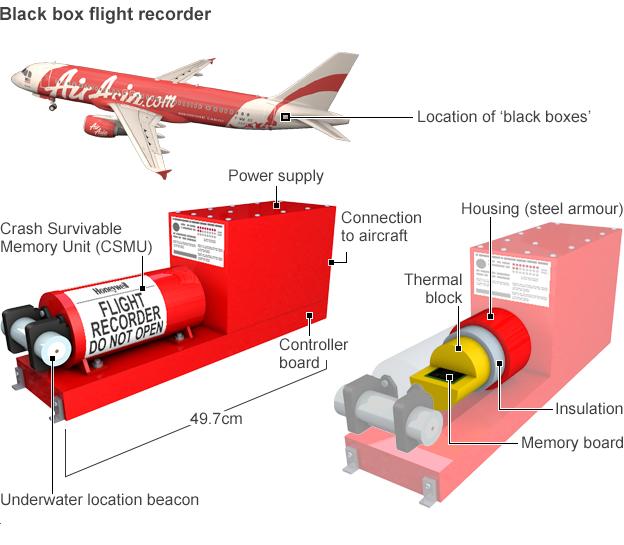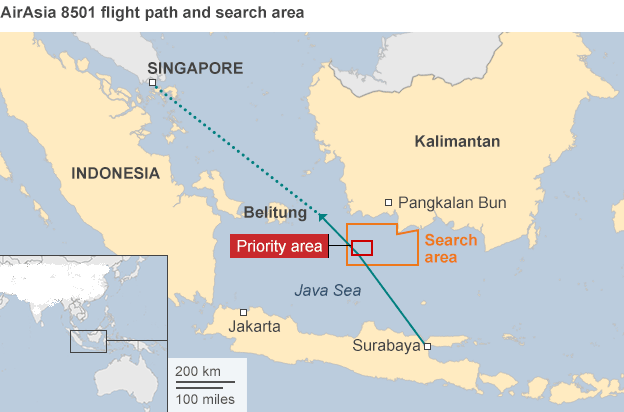Aircraft Incident Investigations.
Air Crash Investigations.
Aircraft Security
Flight Data Recorder Systems
Flight recorder
Flight data monitoring programs
Cockpit voice recorder
|
Is there a difference between an aircraft incident investigation and air crash investigation?
Yes. What is the difference between an aircraft incident investigation and air crash investigation? All air crashes are incidents. Not all aircraft incidents are air crashes. In an air crash, the aircraft usually is damaged beyond repair. What are examples of aircraft incidents or air crash investigations? Air crash investigation Questions that have been answered. Questions that need to be answered. What are the specifications of the aircraft? An Indonesia AirAsia Airbus A320-216, performing flight QZ8501. What was first information report about the aircraft on December 28, 2014? On December 28, 2014, AirAsia Indonesia flight QZ8501 to Singapore went missing. Who reported this aircraft Incident? According to the Indonesian air traffic control, a flight reportedly carrying 162 people on board — 155 passengers plus 7 crew – had disappeared from radar. AirAsia flight 8501 had taken off from Surabaya and was heading to Singapore Sunday morning when it disappeared from radar at 7:24AM. What is known about this aircraft with harms description up to now? 
Narrative: An Indonesia AirAsia Airbus A320-216, performing flight QZ8501, went missing over the Java Sea between Surabaya and Singapore. On board are 155 passengers and seven crew members. The flight took off from runway 10 at Surabaya-Juanda Airport (SUB) at 05:35 hours local time (22:35 UTC). The airplane turned left, tracking 329° over the Java Sea. The planned cruising altitude of FL320 was reached at 05:54. At the same time the airplane turned left to 319°. Ten minutes later the airplane slightly changed course to 310°. Upon entering the Jakarta Flight Information Region (FIR) over the TAVIP waypoint at 06:12 the flight contacted Jakarta ACC. The flight stated that they were deviating to the left of their planned route along airway M-635 to avoid clouds and requested a climb to FL380. The requested climb was not possible due to other traffic but the flight was cleared to climb to FL340. According to the Indonesian Ministry of Transport the airplane was still on radar at 06:16 hours (Surabaya time, 23:16 UTC). At 06:17 only the ADS-B signal was visible with the target disappearing at 06:18. On December 30 pieces of debris were located at sea. An official of the Ministry of Transportation confirmed that these were from the missing flight. In the course of the da bodies were recovered from the sea. Indonesia’s search and rescue agency Basarnas said it had obtained a sonar image that might be the main body of the missing jet on the floor of the Java Sea. The agency said the image appears to show an airplane upside down on the ocean floor in 24-30 meters of water. What recommendations are there from Asif Qureshi on January 3, 2015 relevant to flight data recorder systems? Here is the profile of the individual who has makes these recommendations. http://www.qureshiuniversity.com/biodata.html All aircrafts must have flight video recorder systems in place. This means if AirAsia went down on December 28, 2014, and lost contact with Air traffic control, the flight video recorder systems would give minute-by-minute, second-by-second coverage of inside the aircraft and outside the aircraft from remote location or ground location. Merger of aircraft manufacturers into one world entity is required. Establishment of World Aviation Administration. http://www.qureshiuniversity.com/aviationworld.html What questions need to be answered? What is the latest update relevant to this aircraft? Aircraft Security Flight Data Recorder Systems Inside the aircraft coverage gives answers to these questions. What had happened on the plane just before the crash? What exactly happened inside the aircraft, within the aircraft at the point of its disappearance from radar? Outside the aircraft coverage gives answers to these questions. Did a missile strike the aircraft? If so, from where did the missile attack originate? 

What is a "black box"? An airplane actually has two black boxes: a flight data recorder, which stores information on specific parameters such as flight control and engine performance, and a cockpit voice recorder, which records background sound and conversations between crew members and air traffic control. The black box isn't actually black at all. It is painted bright orange in order for it to be more easily spotted in wreckage. How is the black box designed? To protect the stack of memory boards that store information, black boxes are wrapped in a thin layer of aluminum and a 1-inch layer of high-temperature insulation, and then encased in a corrosion-resistant stainless steel or titanium shell. The black box must be able to withstand an acceleration of 3,400 Gs (3,400 times the force of gravity), which equals an impact velocity of about 310 mph. It must also survive flames up to 2,000 degrees F for one hour, and the beacon should be able to emit a signal once per second while submersed in 20,000 feet of saltwater for 30 days. The beacon cannot be heard by the human ear but can be easily detected by sonar. The beacon is battery-powered, with a shelf life of up to six years. Why does it take so long to find them? Search teams must be in range of the beacon, about 15 miles. However, a beacon could be snapped off during a high-impact crash. Where is the black box located? The black box is typically installed in the tail of the plane, which is usually the last portion of the plane to make impact. How much data can a black box store? A flight data recorder is required to store a minimum of 25 hours of flight information. A cockpit voice recorder is required to record a minimum of 2 hours of audio information. What would it take to destroy a black box? "It would take a concentrated fire beyond its design strength, or an impact so high that it would be beyond what it could withstand." Has a black box ever been destroyed? There are a handful of cases in which black boxes have not been recovered, and a couple of cases in which the flight data recorder was found but not the cockpit voice recorder, or vice versa. Rarely, a recorder is recovered but blank or too damaged to read. Could black boxes transmit information out rather than store it in, so that search teams don't have to go into dangerous terrain to find them? 1 Purpose of Flight Data Recorders The purpose of an airplane flight data recorder system is to collect and record data from a variety of airplane sensors onto a medium designed to survive an accident. Depending on the age of an airplane, the FDR system may consist of (1) an analog or digital flight data acquisition unit (FDAU) and a digital FDR (DFDR) that may have a tape or solid-state memory, or (2) simply an FDR. The protected medium that collects data from an airplane resides in the FDR or DFDR. This recording system has been installed in thousands of airplanes, and continues to play a key role in making airplane travel as safe as possible. The data collected in the FDR system can help investigators determine whether an accident was caused by pilot error, by an external event (such as windshear), or by an airplane system problem. Over the years, these data have contributed to airplane system design improvements and the ability to predict potential difficulties as airplanes age. An example of the latter is using FDR data to monitor the condition of a high-hours engine. Evaluating the data could be useful in making a decision to replace the engine before a failure occurs. 2 History of Flight Data Recorders Flight data recorders were first introduced in the 1950s. Many first-generation FDRs used metal foil as the recording medium, with each single strip of foil capable of recording 200 to 400 hr of data. This metal foil was housed in a crash- survivable box installed in the aft end of an airplane. Beginning in 1965, FDRs (commonly known as "black boxes") were required to be painted bright orange or bright yellow, making them easier to locate at a crash site. What evidence is there that AirAsia QZ8501 flight of December 8, 2014, did not crash due to bad weather or pilot trying to gain altitude? The aircraft appears to have disintegrated after it crashed into the seabed. A bad weather crash into the seabed cannot make an aircraft disintegrate. Disintegration after an air crash into the seabed can occur due to a missile attack from a Navy ship, for example Navy ship Simpson which was around that area when the plane went down, or an explosion within the aircraft. An aircraft pilot trying to gain altitude also cannot make an aircraft disintegrate into the seabed. Navy ship Simpson captain: Did he supervise firing a missile? Was any bomb planted within the aircraft that exploded? No question can remain unanswered. Did the aircraft disintegrate during the crash into sea? Yes. What caused the aircraft to crash? Only two possibilities can cause disintegration of an aircraft that successfully passed all aircraft inspections: missile attack or aircraft attack from outside (possibly from navy ship Simpson), or a bomb exploded inside the aircraft. |
